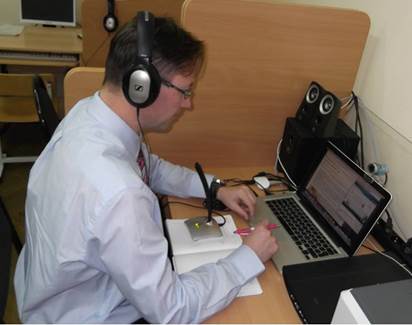1. Kolesnikova I. A. Nepreryivnoe obrazovanie kak fenomen XXI veka: novyie rakursyi issledovaniya // Nepreryivnoe obrazovanie: XXI vek. Vyipusk 1, 2013. URL: http://lll21.petrsu.ru/journal/article.php?id=1941.
2. Ageev V.N., Drevs Yu.G. Elektronnyie izdaniya uchebnogo naznacheniya: kontseptsii, sozdanie, ispolzovanie. M.: MGUP, 2003. 234 s.
3. Robert I.V. Sovremennyie informatsionnyie tehnologii v obrazovanii: didakticheskie problemyi; perspektivyi ispolzovaniya. M.: IIO RAO, 2010. 140 s.
4. Nayt F. Ponyatie riska i neopredelennosti: per. s angl. S.A. Afontseva // THESIS. 1994. Vyip. 5. S. 12–29.
5. Poltoratskaya T.B. Razvitie teoreticheskih predstavleniy o riske v ekonomicheskoy nauke: Sbornik nauchnyih trudov po itogam Mezhdunarodnoy nauchno-prakticheskoy konferentsii "Razvitie ekonomiki i menedzhmenta v sovremennom mire". 2014. S. 15.
6. BalalaEva O. Yu. Ponyattya «didaktichniy rizik» u kontekstI proektuvannya elektronnih posIbnikIv // NaukovI zapiski NIzhinskogo derzhavnogo unIversitetu Im. Mikoli Gogolya. SerIya: Psihologo-pedagogIchnI nauki, 2013. # 2. S. 7–12.
7. BalalaEva O.Yu. Proektuvannya elektronnih posIbnikIv z latinskoYi movi dlya vischih agrarnih navchalnih zakladIv: dis. ... kand. ped. nauk. / Institut InformatsIynih tehnologIy I zasobIv navchannya. KiYiv, 2016. 269 s.
8. Zaynutdinova L. H. Sozdanie i primenenie elektronnyih uchebnikov: na primere obschetehnicheskih distsiplin. Astrahan : TsNTEP, 1999. 363 s.
9. Cherez formyi k smyislam: o novoy universitetskoy obrazovatelnoy modeli / pod red. Afanaseva Yu.N. M.: RGGU, 2006. 224 s.
10. MadzIgon V. M., Doroshenko Yu. O., LapInskiy V. V. PedagogIchnI aspekti stvorennya I vikoristannya elektronnih zasobIv navchannya // Problemi suchasnogo pIdruchnika. 2003. Vipusk 4. S. 70–82.












